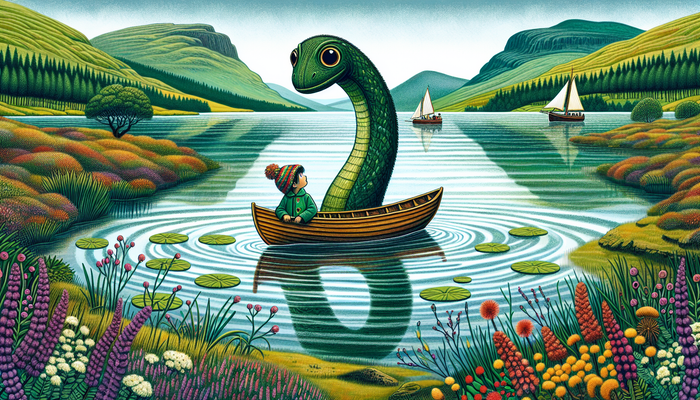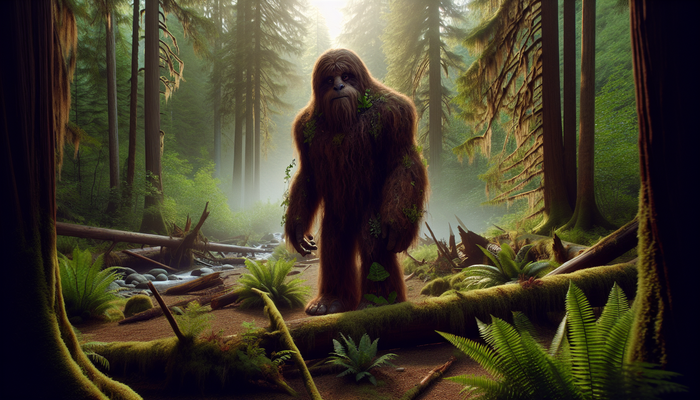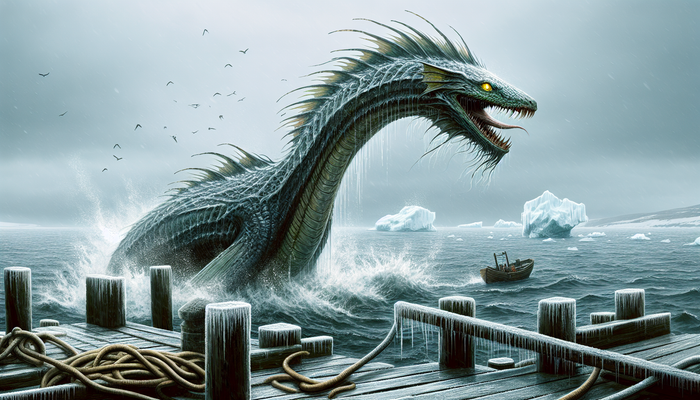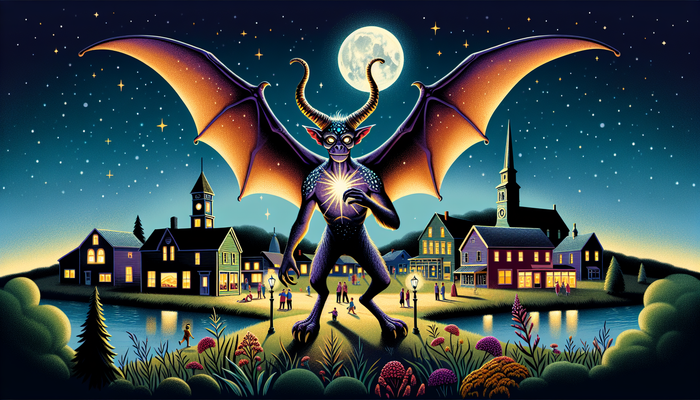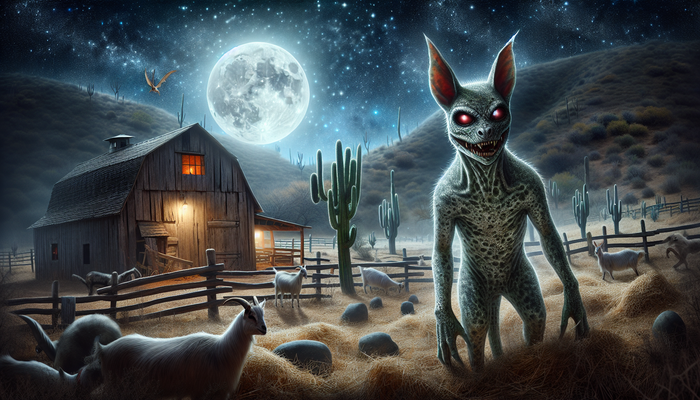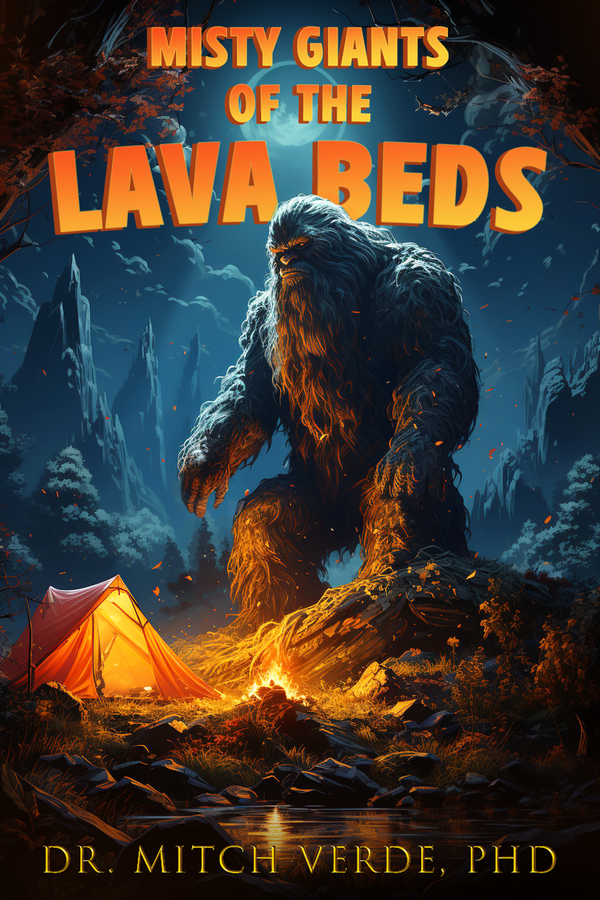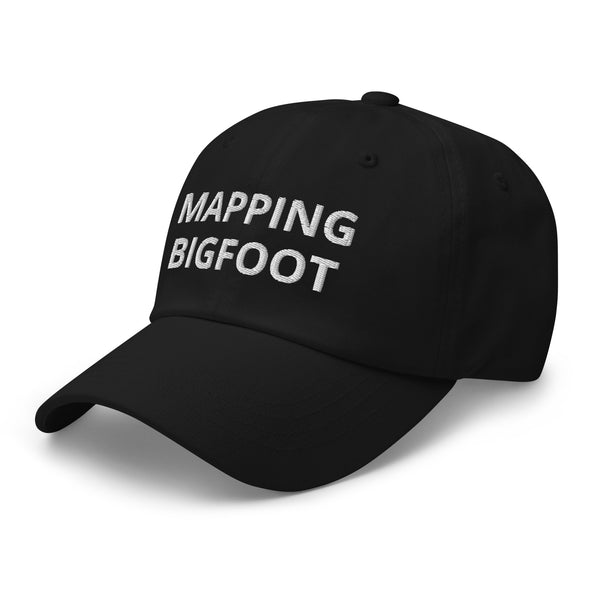Chasing Shadows in the Congo: The Mokele Mbembe
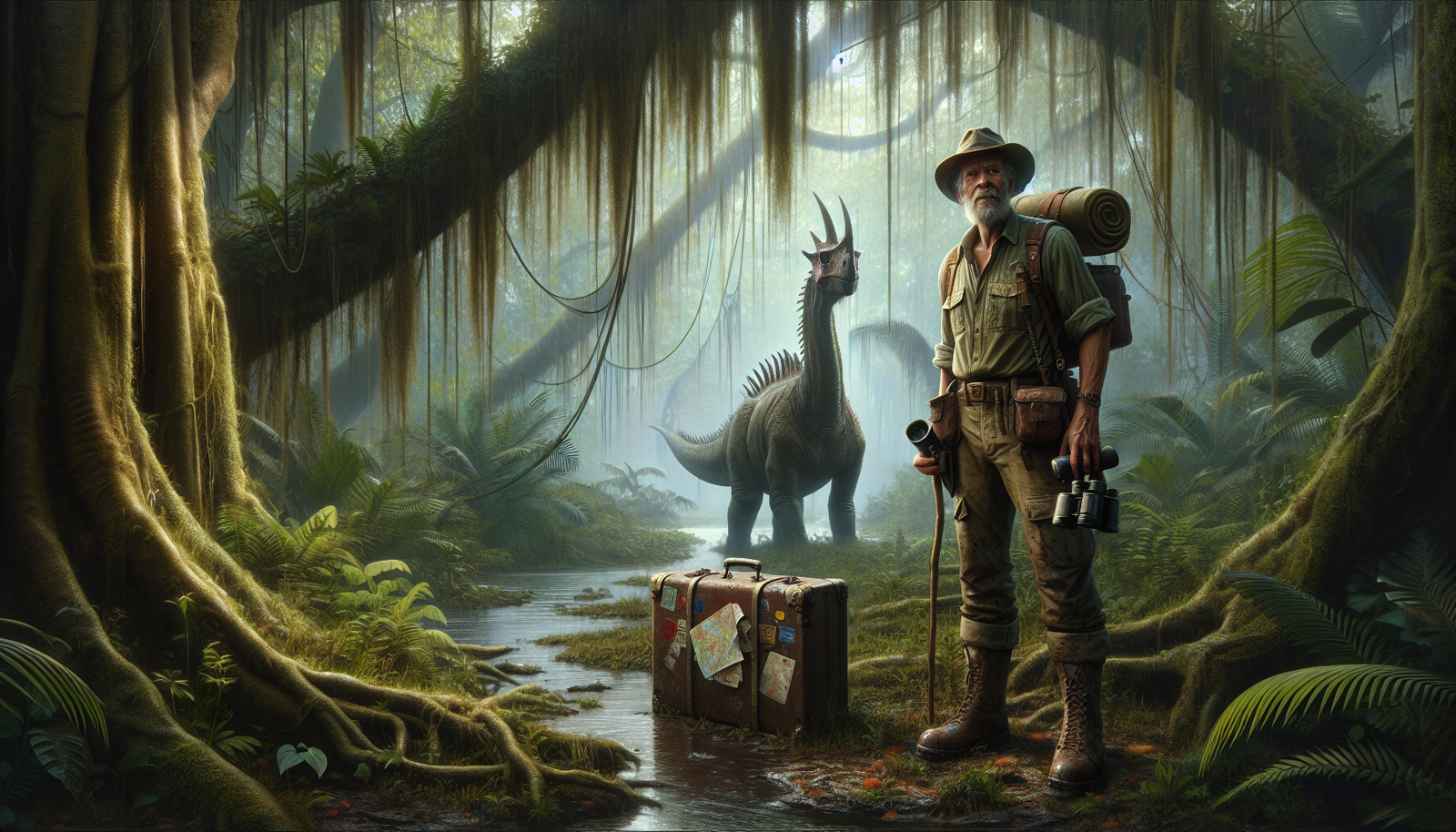
By Wade Beaumont, Cryptozoologist and Park Ranger
The Congo Basin, a vast expanse of lush rainforests and winding rivers, holds many secrets. But none are as captivating or as elusive as the Mokele-Mbembe, a creature straight out of a prehistoric storybook. Picture this: you're paddling down a murky river, the dense jungle pressing in on either side. Suddenly, the water churns and a massive, long-necked beast rises from the depths, its smooth, grayish-brown skin glistening in the dappled sunlight. It fixes you with a reptilian gaze, lets out a low, rumbling bellow, and then, just as quickly as it appeared, slips back beneath the surface, leaving you questioning whether it was ever really there at all.
This is the Mokele-Mbembe, a cryptid that has captured the imagination of explorers, scientists, and cryptozoology enthusiasts for centuries. Its name, derived from the Lingala language spoken in the Congo region, translates to "one who stops the flow of rivers" - a fitting moniker for a creature said to dwell in the deep, slow-moving waters of the Congo Basin.
The Legend of Mokele-Mbembe
For the indigenous tribes of the region, the Mokele-Mbembe is more than just a legend; it's a very real part of their history and their understanding of the world around them. They describe it as a massive, sauropod-like creature, similar in appearance to the long-necked dinosaurs that roamed the Earth millions of years ago. It's said to have:
- A bulky body
- A long, flexible neck
- A small head
- A powerful, muscular tail, not unlike a crocodile
Its skin is reportedly smooth, lacking the scales of a reptile, and is usually described as being a brownish-gray color.
But the Mokele-Mbembe isn't just notable for its appearance; it's also known for its fierce temperament. Despite being an herbivore, subsisting primarily on the lush vegetation that grows along the riverbanks, it's said to be highly territorial and aggressive, particularly towards hippos and boats that venture too close to its domain. There are stories of the creature using its immense size and strength to overturn canoes and even kill the unfortunate souls aboard, though it supposedly leaves the bodies untouched, having no interest in consuming human flesh.
Early Accounts and Expeditions
The legend of the Mokele-Mbembe has been passed down through generations of Congo Basin tribes, but it wasn't until the 18th century that the Western world got its first tantalizing glimpse of this mysterious creature. In 1776, a French missionary by the name of Abbé Lievain Bonaventure Proyart wrote of enormous, clawed footprints discovered in the region, footprints far too large to belong to any known animal. It was the first recorded hint that there might be something extraordinary lurking in the heart of Africa.
But it was in the early 20th century that interest in the Mokele-Mbembe really began to take off, fueled in large part by the "dinosaur mania" that was sweeping the globe at the time. The discovery of sauropod fossils in the late 1800s had ignited the public's imagination, and suddenly, the idea of living, breathing dinosaurs didn't seem quite so far-fetched.
Carl Hagenbeck and Ludwig Freiherr von Stein zu Lausnitz
Enter Carl Hagenbeck, a renowned German animal dealer and showman. In his 1909 book "Beasts and Men," Hagenbeck speculated about the possibility of living dinosaurs in Africa, based on stories he had heard from explorers and big game hunters. Though he offered no concrete evidence, his musings were enough to capture the attention of the media and the public alike.
Just a few years later, in 1913, another German explorer, Ludwig Freiherr von Stein zu Lausnitz, provided what would become the most detailed and influential description of the Mokele-Mbembe to date. While conducting a survey of what was then the German colony of Cameroon, von Stein collected stories from indigenous guides about a strange, sauropod-like creature that inhabited the jungles and rivers of the region. He described it as being:
- "Of a brownish-gray color with a smooth skin"
- "Its size approximately that of an elephant; at least that of a hippopotamus"
- Having a "long and very flexible neck"
- And a "long, muscular tail like that of an alligator"
Von Stein's vivid account, though met with skepticism in some quarters, only served to fuel the growing interest in this mysterious creature.
Modern Expeditions and Controversies
The 1980s saw a surge in Mokele-Mbembe expeditions, led by intrepid explorers and scientists determined to uncover the truth behind the legend.
Roy Mackal's Expeditions
Chief among them was Roy Mackal, a professor of zoology at the University of Chicago. Mackal led two expeditions to the Congo in 1980 and 1981, during which he and his team collected dozens of eyewitness accounts from indigenous tribes and explored the creature's alleged habitats in the dense swamps and rivers of the Congo Basin.
Mackal's findings, detailed in his book "A Living Dinosaur? In Search of Mokele-Mbembe," were tantalizing, if not entirely conclusive. He and his team found no physical evidence of the creature's existence - no bones, no clear footprints, no indisputable photographs - but the sheer volume and consistency of the eyewitness reports they collected was enough to convince Mackal that there was something out there, something that science had yet to explain.
Other Notable Expeditions
Other notable expeditions followed in Mackal's footsteps:
- Herman Regusters, an aerospace engineer, claimed to have recorded the vocalizations of the Mokele-Mbembe during his 1981 expedition to Lake Tele in the Congo.
- Marcellin Agnagna, a Congolese biologist, allegedly filmed the creature during a 1983 expedition, but the footage was said to have been lost or damaged, leading to controversy and skepticism.
- Japanese explorer Tokuharu Takabayashi led multiple expeditions to the region in the late 1980s, collecting additional eyewitness accounts but failing to produce any concrete evidence.
Creationism vs. Evolutionary Science
Despite the lack of physical proof, the legend of the Mokele-Mbembe has continued to captivate the imaginations of cryptozoology enthusiasts and the general public alike. It has inspired countless books, documentaries, and even Hollywood films, like the 1985 movie "Baby: Secret of the Lost Legend," which tells the story of a family of sauropods discovered living in the African jungle.
But the Mokele-Mbembe isn't just a pop culture curiosity; it has also become a flashpoint in the ongoing debate between creationism and evolutionary science. Young Earth creationists, who believe that the Earth is only a few thousand years old and that humans and dinosaurs coexisted, have seized upon the legend of the Mokele-Mbembe as potential evidence to support their views. They argue that the discovery of a living sauropod in the Congo Basin would challenge the scientific consensus on the extinction of the dinosaurs and lend credence to their literal interpretation of the Bible.
However, the scientific community remains deeply skeptical of such claims. The idea of a large, sauropod-like creature surviving undetected in the modern era is seen as ecologically and evolutionarily improbable, if not outright impossible. Critics point to the lack of physical evidence, the potential for misidentification and exaggeration in eyewitness accounts, and the sheer improbability of a population of large, terrestrial animals remaining hidden in an increasingly interconnected and well-explored world.
Cultural Significance and Conservation Efforts
But while the scientific debate rages on, the cultural and historical significance of the Mokele-Mbembe legend cannot be denied. For the indigenous peoples of the Congo Basin, the creature is a vital part of their folklore and their understanding of the natural world around them. The stories and traditions surrounding the Mokele-Mbembe have been passed down through generations, serving as a testament to the deep connection between these communities and the environment they call home.
In recent years, the search for the Mokele-Mbembe has taken on a new urgency, driven in part by concerns over the rapid destruction of the Congo Basin rainforest and the potential loss of the unique biodiversity it supports. Conservationists and scientists alike have come to recognize the importance of preserving not just the physical environment, but also the indigenous knowledge and traditions that are so intimately tied to it.
This has led to a shift in focus from the Republic of the Congo to neighboring Cameroon, where political instability and conflict have made research and conservation efforts more challenging. Intrepid explorers like Bill Gibbons and Michel Ballot have led multiple expeditions into the remote rainforests of Cameroon, collecting new eyewitness accounts and exploring previously uncharted areas in search of clues to the Mokele-Mbembe's existence.
Along the way, they've also uncovered tantalizing reports of other mysterious creatures that may share the Mokele-Mbembe's habitat, like the Ngoubous, a horned, semiaquatic animal said to resemble a cross between a rhinoceros and a dinosaur, and the Dodu, a large, serpentine creature with a prehensile tail. While the evidence for these creatures remains as elusive as that for the Mokele-Mbembe itself, their stories serve as a reminder of just how much we still have to learn about the incredible diversity of life on this planet.
The Future of Mokele-Mbembe Research
As we look to the future of Mokele-Mbembe research, it's clear that there are still many questions left unanswered. Will advances in technology, like remote sensing and camera traps, finally provide the concrete evidence that has eluded researchers for so long? Will the ongoing efforts to protect and preserve the Congo Basin rainforest help to ensure that the secrets of the Mokele-Mbembe, and the countless other species that call this region home, are not lost forever?
Only time will tell. But one thing is certain: the legend of the Mokele-Mbembe, and the enduring fascination it inspires, is a testament to the power of mystery and the human desire to explore and understand the world around us. Whether the creature ultimately proves to be a flesh-and-blood reality or a figment of our collective imagination, its story will continue to captivate and inspire us for generations to come.
As for me, I can't help but feel a kinship with those intrepid explorers and researchers who have dedicated their lives to chasing down the truth behind this elusive beast. As a born and bred Texan with a love for the wild and a healthy respect for the unknown, I understand the allure of the hunt, the thrill of the pursuit, and the deep satisfaction that comes from unraveling the mysteries of the natural world.
And so, I'll keep following the story of the Mokele-Mbembe, just as I follow the stories of Bigfoot and the Chupacabra and all the other cryptids that haunt the edges of our maps and the depths of our imaginations. Because in a world that can sometimes feel all too explainable, all too tamed and mapped and catalogued, it's the things we don't understand, the things that still have the power to surprise and astonish us, that make life worth living.
So here's to the Mokele-Mbembe, and to all the mysteries still waiting to be solved. May they continue to inspire us, to challenge us, and to remind us of the incredible wonders that still lurk in the wild places of the world, just waiting to be discovered.
From Bigfoot to UFOs: Hangar 1 Publishing Has You Covered!
Explore Untold Stories: Venture into the world of UFOs, cryptids, Bigfoot, and beyond. Every story is a journey into the extraordinary.
Immersive Book Technology: Experience real videos, sights, and sounds within our books. Its not just reading; its an adventure.


